
SRHS
Steamboat Rock Historical Society
MOVING BEYOND THE OLD LIMITS
THE RAILROAD
The Iowa Central was operated in conjunction with the Minneapolis & St. Louis railroad beginning in 1900 and became the property of the M&StL in 1912.
Until the advent of automobiles in the 1900’s the railroad depot was a very busy and important place in the community. There were three passenger trains each way every day and two local freight trains with a great many extra freight trains beside.
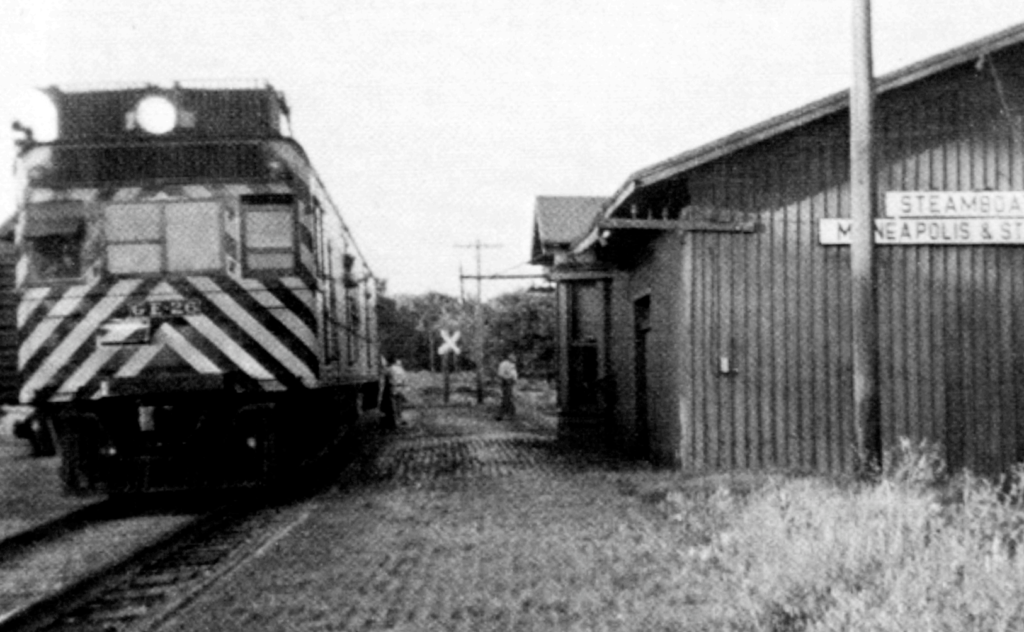
At the turn of the century there was a big passenger business, and it was an “event” especially on Sunday afternoons to walk to the depot to meet the train. The people walked or they rode the horse drawn bus which was operated by the livery barn and met every train.
Dennis Holmes who was born and raised in Steamboat Rock, is the grandson of J. A. Holmes who was depot agent during two years in the first decade of the new century. Dennis became a real railroad enthusiast, and even today keeps up on railroad history. In the Fall 1992 issue of North Western Lines, the official publication of the Chicago North Western Historical Society, Dennis wrote a wonderful article detailing the history of the railroad in Steamboat Rock. The following are excerpts from that article describing the depot and the railroad scene in Steamboat Rock and he remembers it from experience and his grandfather’s depiction’s.
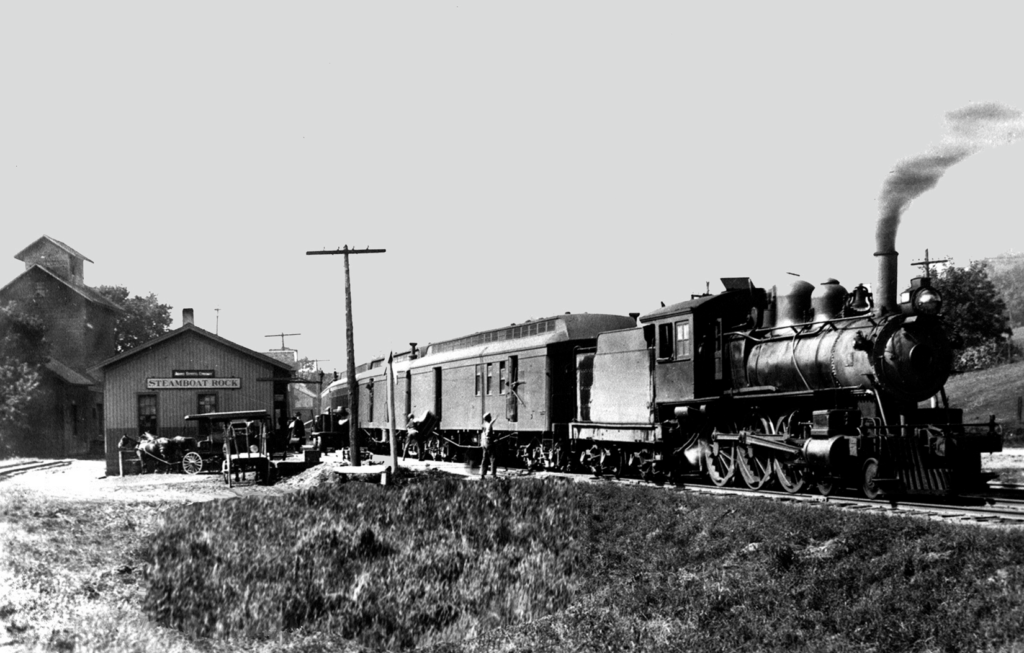
“The depot in Steamboat Rock had to rank as the oldest or at least one of the oldest depots on the Louie. Built in 1868, the building featured vertical boards and battens and measured 24 x50 feet with a bay window measuring eight feet. The grassencompassed platform built with Flint Company bricks was approximately 100 feet in length. Kelly-green was the color of M&StL depots in later years, but previously they were painted both gray and boxcar red. The passenger waiting room was located on the east side of the building. The walls were painted in that nondescribable dusky color somewhere between gray and tan. The arrival and departure board in later years showed the advertised time for trains 7 and 8 although you could no longer set your watch by their accuracy.”
The ticket window provided a view into the agent’s office where the potbellied stove was regularly used, unlike the waiting room stove which hadn’t seen fire in some time. The words ‘Iowa Central Railway’ were cast on the firebox door of both stoves. One must have the experience of spitting on a red-hot pot belly to realize how fast the sizzling spittle could dance. The farther you moved from the stove the colder you were. The agent generally would be seated in the bay window facing north, where the telegraph keys with the tobacco cans on sounders were located. Velvet and Prince Albert were the preferred tins. Also on his table were the city phone, the dispatcher’s phone, and a half-worn billing machine–a typewriter with larger that normal large-case-letters. A ticket case was hanging from the east wall and a battered desk was located on the west wall. Near the south side was a tariff cabinet which was covered by a heavy curtain suspended from a wire. The agent always made you feel at home with a little conversation as long as it didn’t interfere with his duties.
The west portion of the building was the freight room and the coal bin which upon occasion doubled as a rest room. An outhouse was located just west of the depot. One large sliding door was located on the north side of the freight room and a similar portal was found on the south side. At one time, there was a track running behind the depot serving another elevator, but both elevator and siding were removed decades ago.”
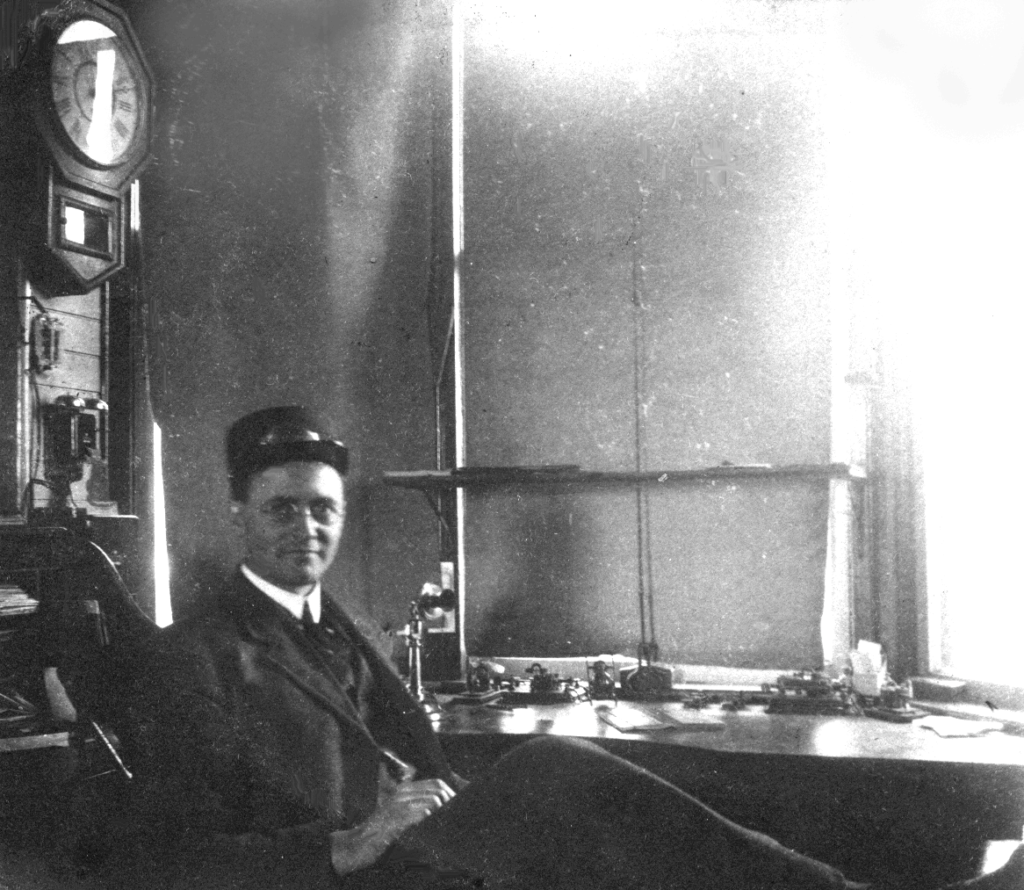
“My grandfather, J.A. Holmes, came to Steamboat Rock, in 1907 as agent for the Iowa Central and ceased his service with the road in 1909. He related that on July 4, 1907, he sold more than one hundred ticket to Union and Marshalltown for their Independence Day celebrations. Tickets sold for two cents a mile. Even though he spent most of his working years at the Farmers Savings Bank, he never relinquished his love for the railroad. He would tell tall tales of the rails, mentioning men like Mr. Benion, the auditor from Oskaloosa, a colorful man by the name of ‘Fat Parker, Hy McFarland, and a train master by the name of Lanphere. In his retirement he always arranger to be available to go to the depot to pick up freight or express for my father’s business (Holmes Drugstore).”
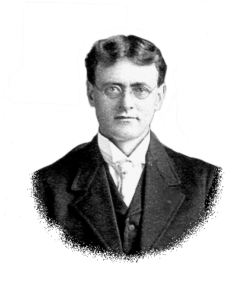
J.A. Holmes
“On one of my earliest memories of such a trip, I stood on the platform, terrified of the steam locomotives on a freight train making a run for the hill on the east end of town. At one time, this grade required helper engines. As a little fellow it was indeed a comfort to have my grandfather’s firm hand to grasp for support.”
“Visitors to the freight room were mystified by many round holes about an inch in diameter dotting the floor. Curiosity caused me to ask the origin of this peculiar floor design. Grandfather related that in the early days, intoxicants were shipped in wooden barrels. Some of the locals would pry away boards along the foundation of the depot, crawl on their bellies under the floor, and bore holes upward in order to fill a pail or jug with some ill-gotten hooch.”
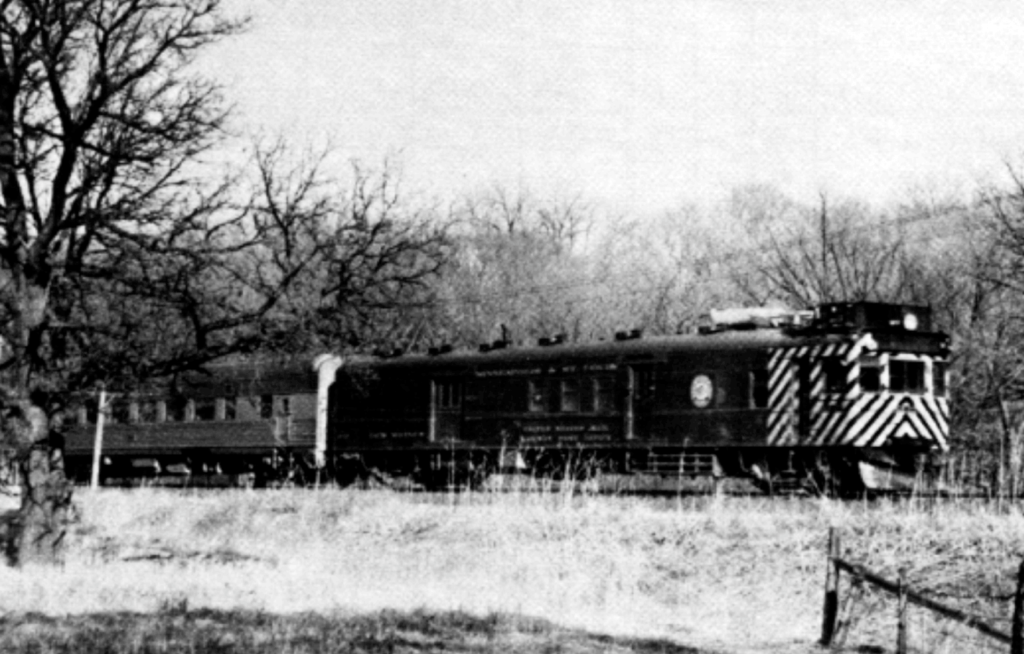
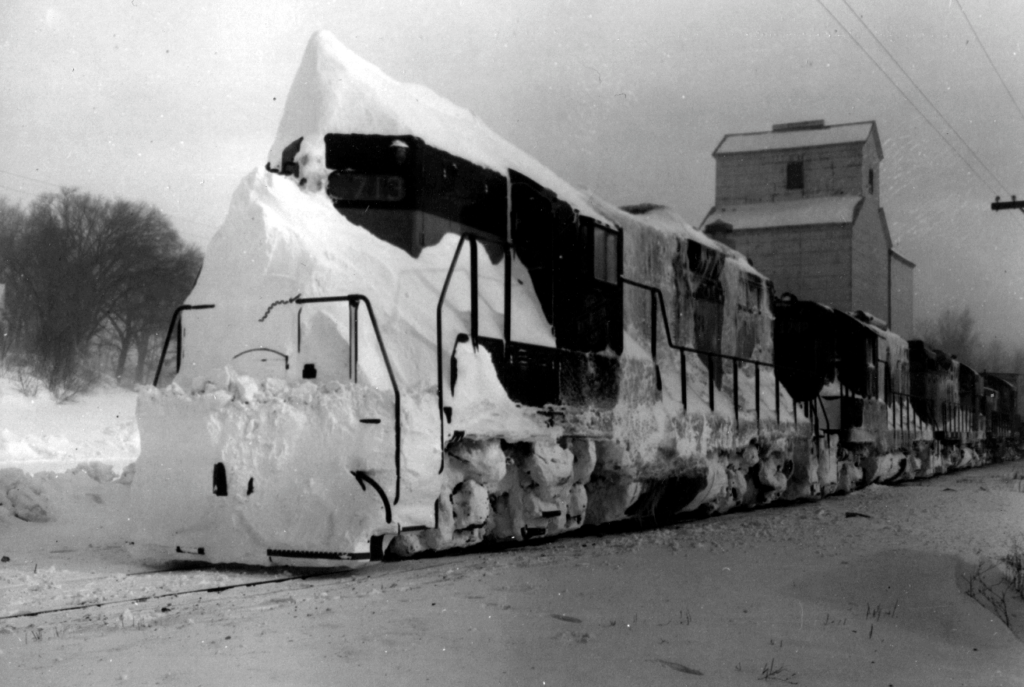
“In the 1950’s it was occasionally necessary to meet the evening train to mail a letter. Train 8 was due at 5:37 p.m., but more often than not, it arrived closer to 6:30 or 7:00. While waiting on the platform, it was not hard to notice how the paint had started to peel away from the old siding on the depot. The roar of the Iowa River cascading over the dam virtually drowned out the sound of crickets and frogs. Standing close to the bay window, you could discern the clamor of dots and dashes from the Morse sounder. The smell of feed and grain wafted over from the Potgeter Elevator which had closed down for the night. A passing automobile kicked up dust on the river road which followed the Louie and the Iowa River nearly to Eldora. Several red or green 40-foot boxcars were probably on the siding. Suddenly you would hear a rumble and the sound of an air horn echoing along the river valley–a northbound freight headed by an A-B-A set of FT units. That usually indicated that Train 8, or the “Toonerville” in local parlance, was in the hole at Abbott just a few miles north. Some fifteen or twenty minutes after the dust settled from the northbound freight, you could hear the faint whistle of the gas-electric doodlebug. The headlight would become visible and around the curve and over the Iowa River trestle would come the old “puddle-jumper” pulling a new stainless steel coach. After it rattled to a quick stop in front of the old green station building, I would drop the letter in the RPO slot on the side of the doodlebug while the clerk would exchange mail sacks with the local drayman. With a highball from the conductor and two whistle blasts from the engineer, Train 8 rattled down the valley to Eldora, Marshalltown, Oskaloosa, and Albia and the Wabash connections.”
© 2020 Steamboat Rock Historical Society | All Rights Reserved
Powered by Hawth Productions, LLC